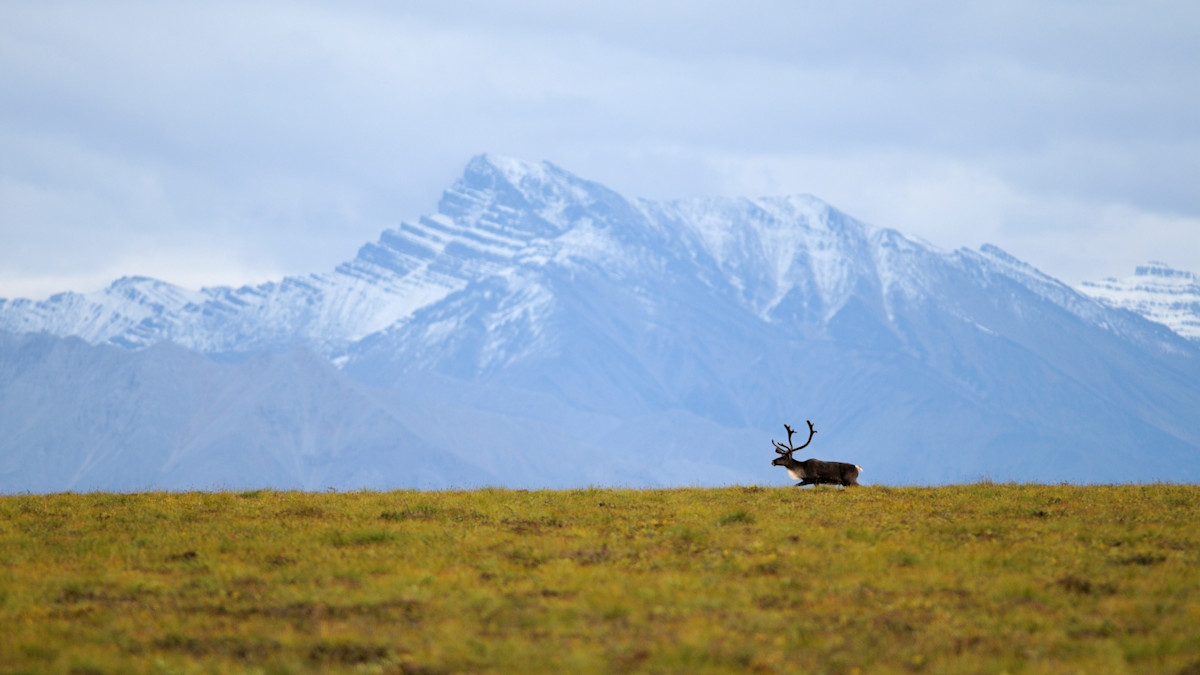
Last week, the BLM announced that it would deny a permit for Ambler Road Project in northern Alaska, which would have paved the way for mining development in the Brooks Range. The proposed road would have traversed 211 miles along the southern edge of the mountains, crossing over 3,000 streams and providing access to $7.5 billion of copper deposits.
The road, had it been permitted, would’ve been privately built, managed, and restricted by the Alaska Industrial Development and Export Authority for the purpose of mining access. Public use would not have been allowed. And while there are currently no mining prospects in the region, the Environmental Impact Statement for the road assumes there are at least four large, minable deposits in the region that could be rapidly developed. The main prospectors of the deposits are Trilogy Metals and South32—companies headquartered in Canada and Australia, respectively.
As a main selling point when marketing the road and potential mines to the public, Tony Giardini, the CEO of Trilogy, pointed out the potential for job creation in the area. In an interview with Alaska Business Magazine in 2020, he said, “The cost of the Arctic project [the largest in the region] is probably going to be close to $1 billion, and that’s going to create hundreds and hundreds of jobs. The nice thing is these aren’t jobs where you need an advanced degree. We need drivers, mechanics, people to build roads, that sort of thing. These are good, solid jobs that are going to give a real boost to the state of Alaska and, in particular, in an area that needs jobs badly. In the end, it’s going to be thousands of jobs for people.”
It’s a story that’s played out time and again in Alaska: pitting local jobs and opportunity against the broader use of public resources in the state—namely, the hunting, fishing, and wilderness recreation opportunities available on the same land. Under the Biden administration, the BLM (and EPA) has swung both ways on similar decisions in Alaska over the last several years. While the administration shut down the Pebble Mine, they’re simultaneously opening up 28 million acres of lands to oil and mining development in other areas of the state.
Also in the vein of conservation, though, the BLM finalized new rules last week for the National Petroleum Reserve, a 23-million acre swath of land from the Brooks Range north to the Arctic Ocean, intended to balance oil extraction with other uses. It’s the first time the management plan for the region has been updated in 40 years and assures the “maximum protection” of fish and wildlife, subsistence, and recreational values in the area. The rules codify an existing ban on new leases in 10.6 million acres (40%) of land in the Petroleum Reserve and mandate that the value of wildlife and other uses be weighted more heavily when considering development activities on the remaining 13.3 million acres.
Hunters are hailing the rule change as a conservation success. “As an Alaskan hunter, I have found the solace provided by America’s Arctic a backcountry experience beyond compare,” Barry Whitehill, vice chair of the Alaska Chapter of BHA, said in a press release. “This new framework will properly recognize the significant subsistence, recreational, fish and wildlife, historical, and scenic values found nowhere else on Earth.”
But jumping back to the southern side of the Brooks Range, the BLM’s decision against the road means they won’t allow a right-of-way across BLM land, essentially shutting down possibilities for development in the region.
The negative effects the road would’ve had on fish and wildlife in the region are numerous: thousands of culverts would have disrupted hydrologic patterns, and the road itself would have bisected a major caribou migration corridor. There also would have been the melting of permafrost along the road, and acid runoff from rock exposed during construction. And that’s not even including any impacts from future mines, which were excluded because the specifics were unknown, though it’s expected that most would be large, open-pit operations.
While BHA and others are excited about the decision to stop the road, Alaskan senators are outraged. “It’s more than a one-two punch to Alaska. When you take off access to our resources, when you say you cannot drill, you cannot produce, you cannot explore,” Lisa Murkowski told Alaska Public Media last week. “This is the energy insecurity that we’re talking about.”
With so much time and money already invested in prospecting along the Ambler Road, it’s likely that Trilogy and Alaska Industrial Development and Export Authority will contest the decision in some capacity. For now, though, the Brooks Range appears safe from development.




